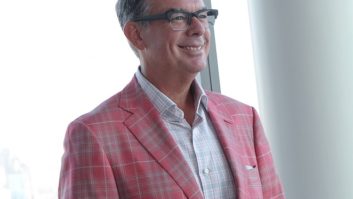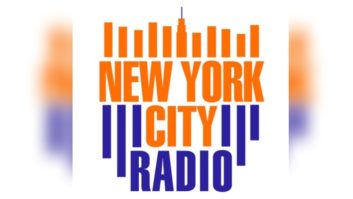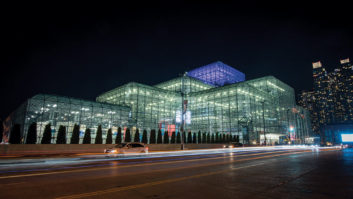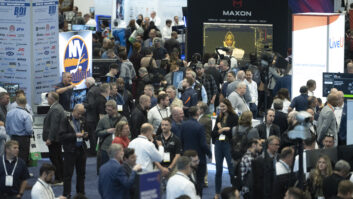
Former NPR Labs senior technologist John Kean recently got together with members of the engineering staff of WNYC and WQXR, AKA New York Public Radio, for a “Loudness Summit” in New York on Sept. 15.
Kean said, “I was honored to be invited to the Loudness Summit, and delighted by the interest and enthusiasm of the WNYC/WQXR technical staff. The session was intentionally interactive, and I fielded many questions and comments throughout the day. The staff also talked about how they envisioned adding loudness metrics into their systems and production workflow, which made it clear that they will be making their excellent radio and online content sound even better.”
Kean added: “Using slides with numerous audio samples, I provided background on the development of ITU-R.BS-1770 metering, metering solutions in digital audio workstations, workflow with target loudness, managing loudness range, normalization for distribution, and loudness-based processing for Internet streaming and podcasts. He also reviewed the Audio Engineering Society’s TD1004.1.15-10 guidelines on loudness management.”
According to Kean, New York Public Radio CTO Steve Shultis and his management team had most of the recording, mixing and engineering and IT staff of the news and classical stations on hand for the gathering. Most of the staff is new to loudness metering, but the station is completing the installation of metering in its production centers.
He also pointed out that WNYC is a leading producer of content for public radio stations around the country, so observing a standard loudness target would be influential for compatible exchange of public radio programming. The staff noted that loudness metrics also will help them produce short-form content, such as announcements, that will better match the surrounding full-length programs. Furthermore, they also recognized how new metrics such as true peak measurement, integrated loudness and loudness range (LRA) can be used to optimize their podcast and streaming media for Internet distribution.
One of those staffers, Assistant Director of Engineering Operations for New York Public Radio Joe Curcio, was directly responsible for organizing the event. He provided his impressions and takeaway from the summit.
Here is his response in full:
The N.Y. Public Radio Engineering department has a very deep and diverse pool of technical talent from maintenance and project management to expert Pro Tools craft editors, remote recording engineers, a technical team dedicated exclusively to the news department as well as operations technicians who cover everything from master control, board-op to general day-to-day two-ways and production. Our digital teams cover everything from podcast prep and live streaming to file format conversions. We knew that the 30+ people with that sort of technical profile who would turn out to be John’s audience would most certainly be hungry for the meat and potatoes of the loudness concepts and technology. As a matter of fact we were so confident that the room was filled with techies that I started the meeting by warning all that “ the conversations and exchanges during the presentation could not exceed –23 to –24 LUFS.” I paused a moment to check if anyone had a puzzled look on their face … there were no puzzled faces at all.

Loudness Summit attendees included: Gregg Gasparino, director, Broadcast Applications and Infrastructure, New York Public Radio; Steve Shultis, CTO, New York Public Radio; John Kean; Joe Curcio, assistant director, Engineering Operations, New York Public Radio; and Rob Christiansen, Broadcast Technology and Streaming technical lead.
At this juncture in the shift from old-school audio level monitoring to the new loudness measuring processes it was very important that the engineering department take the lead in establishing methods and protocols and begin to integrate compliancy and standards. This is especially important for the national programs such as “On The Media,” “Studio360,” “RadioLab,” “The Takeaway” and others that originate from the N.Y.P.R. facility. Back in the day we referred to this sort of thing as maintaining unity gain. However, today between the size of the N.Y.P.R. facility and the number of digital and analog I/O and file-based systems, unity gain takes on a completely different and quite complicated meaning. It’s important that our levels are consistent from our lowest bit AAC streams, digital file downloads, to the wide dynamic range of our orchestral recordings and live broadcasts. Engineering is responsible for everything from establishing what plug-ins will be used to measure loudness in our Pro Tools and DAVID systems to what to look for on our new SAS meter bridges.
With that in mind we had prepared an initial and fairly deep technical itinerary for John that covered everything from the basic definitions of the many loudness acronyms, comparisons between LUFS, RMS and peak values to the algorithms used in the measurement ballistics. John then went to work on the details and the many in-betweens and came up with an excellent presentation.
Rather than generating an onslaught of Eureka! moments, the presentation provided an important, deeper understanding and confirmation of what’s behind the loudness technology curtain. John provided a number of real time visual representations that proved the conceptual theories behind integrated, long term levels as well as problems that can still occur with peaks even though the LUFS metering seemed to be moving happily along the axis. There was, however, at least two Eureka! moments: One with regard to the 3dB discrepancy that can exist when processing a mono file and a very good consensus as to how the NPR mothership should treat the pass/fail status of an individual audio file that is actually part of a complete program (such as music beds).
The big “takeaway” (Oops, sorry for that cheap plug) from the N.Y.P.R. Loudness Summit, was the confirmation of the overall interest in and importance of the subject to the N.Y.P.R. staff. In addition with John’s technical integrity, credentials, and experience at the helm of the presentation, engineering management was able to successfully establish and affirm the concern of the department in taking the initiative to begin to integrate compliance, protocols, tools, methods and standards.











